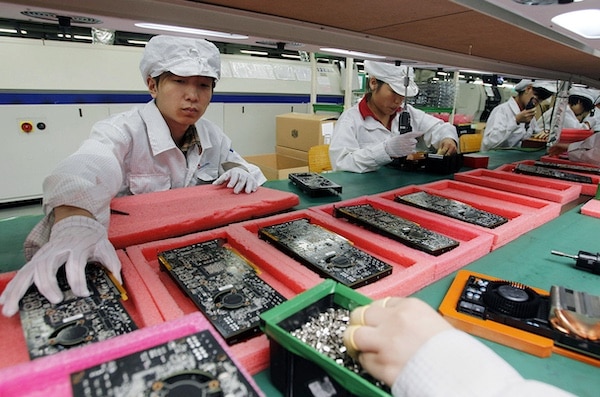If you live in the United States or another wealthy nation in the Global North, workers in distant countries touch many parts of your daily life. Your car may include parts made in Mexico and run on oil drilled in Nigeria. You might drive to receive a vaccine manufactured in India, checking in for your appointment with a smartphone designed by engineers in China.
It’s no secret this flow of goods and services is highly imbalanced. But last month in Nature Communications, researchers put a number on it: The Global South’s workforce provides a staggering 90% of the labor to power the world economy, yet gets only 21% of global income. The findings confirm that the international exchange of labor “is indeed uneven,” says Maurice Kugler, a George Mason University economist who wasn’t involved in the work. This disparity helps explain why, even as trade and technological advances have created what Kugler calls a “global wealth explosion,” many nations in the Global South have high rates of poverty.
Until recently, researchers lacked the means to prove the global labor skew “in empirical terms,” says Jason Hickel, an economic anthropologist at the Autonomous University of Barcelona (UAB) and lead author of the new study. To address this gap, he and his colleagues used a mathematical model to track how labor and goods flowed between countries from 1995 to 2021.
They confirmed that workers in the Global South largely power the world economy. In 2021, for instance, wealthier countries imported 906 billion hours of embodied labor—the total amount of labor required to produce a good or offer a service from start to finish—from poorer countries. In return, they exported only 80 billion hours of any kind of labor, whether it was low-skilled work in sectors like agriculture or high-skilled labor in sectors like computer engineering.
As Hickel explains, that ultimately translates to 826 billion hours of net labor extracted from the Global South—more than what is provided by the entire workforce of the United States and Europe combined. If Global South workers were paid as much as their Global North counterparts, those hours would be worth a whopping $18.4 trillion. The team found, however, that wages in the South are between 87% and 95% lower for work of equal skill.
“It’s always shocking to look at these numbers, because they’re so absolutely huge,” says study co-author Morena Hanbury Lemos, an ecological economist also at UAB.
The massive wage disparities aren’t explained by differences in types of work. Hickel says it’s often assumed that the Global South provides low-skilled labor—farm laborers and factory workers, for example—in return for high-skilled work in the Global North from scientists, engineers, lawyers, and others with advanced degrees.
“This is not at all the case,” Hickel says. The study showed that countries in the Global South provide the majority of labor across all skill levels and sectors, contributing 1124 billion hours in high-skilled labor to the world economy in 2021. That same year, the Global North contributed a total of only 971 billion hours of any kind of labor.
“The Global South is carrying out all the production, but getting the worse deal,” says John Bellamy Foster, a sociologist at the University of Oregon who wasn’t involved in the study. Although wages overall have grown, those in the Global South stay at artificially low levels because these countries are locked in a “race to the bottom” to compete for money and resources from the North, he adds.
And policies and programs designed to make economies in the Global South more self-sufficient can deepen inequities, says Heath Prince, a development economist at the University of Texas at Austin who wasn’t involved in the new study. To obtain loans from international organizations such as the International Monetary Fund or the World Bank, he explains, countries often end up cutting public spending on things such as health care, education, and other sectors that could improve lives and instead focus on paying down debts or exporting resources to other countries, he says. As a result, countries in the Global South are rarely able to reduce poverty through trade alone.
Although it’s often assumed that the South is somehow “catching up,” Hickel notes, the new research reveals the gap is getting wider, with wages in the Global North increasing 11 times more than wages in the Global South did between 1995 and 2021.
The study authors argue that changes in international policy, such as the establishment of a global minimum wage and minimum prices for natural resources, could go a long way toward reducing these inequities. But Hickel thinks such steps are unlikely because they would force rich countries to reduce their consumption or increase their own working hours.
As the climate warms, however, the plight of workers in the Global South will become even more dire. Prince notes that the need to work long hours for minimal wages when combined with rising temperatures will put workers in many sectors at increased risk of heat-related illnesses. “It’s not just that they’re being exploited,” he says.
They’re literally being worked to death.

